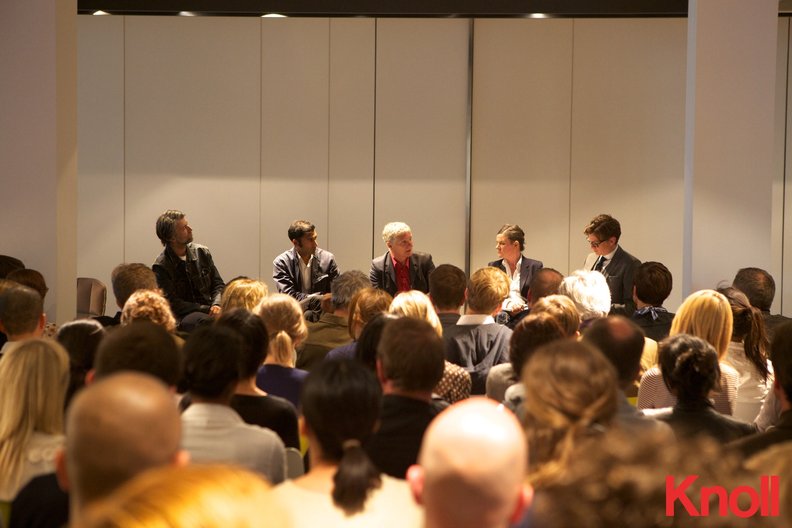
Panel at Knoll Debate. Image ING Media
2 June 2011
by Ellie Smith
This year’s Knoll debate during Clerkenwell Design Week asked the panel to respond to the question ‘are there too many designers?’ Kieran Long chaired the debate to explore whether an over-supply of architects and designers results in exploitation and what impact this has on the quality of design.
While the proposition of exploitation was seemingly radical, Kieran opened the discussion by jokingly saying that the intention was not to start a union. I initially found myself rather disappointed that the conversation wasn’t likely to be as radical as it could be, though in fact the debate went on to cover potential exploitation from various angles and it was particularly interesting to hear from students in the audience about their experiences of breaking into the sector including unpaid internships and increased university fees.
Emily Campbell provocatively suggested that she didn’t care if there aren’t enough designers only if there’s not enough design arguing that students of design are increasingly taught generic skills such as team-working rather than design skills. Rab Bennetts suggested that there are too many architects, that the profession is renowned for being a low paid, that exploitation takes place by clients asking for unpaid pitches and that RIBA no longer protects architects. Interestingly he said that property developers, despite being inherently entwined with capitalism, are in fact the least likely clients to exploit architects – something I hadn’t considered before. Asif Khan brought a fresh view that although there aren’t too many designers there’s a lack of entrepreneurialism amongst them. He talked about his career trajectory to-date and how he’s usually sought out work and clients rather than being responsive. Luke Pearson went as far to suggest that due to the huge increase in places on design courses that there are now fewer good students on each course and overall that there are too many designers. Overall it wasn’t the most optimistic of messages and I wondered what the students in the room were really thinking about their future careers. However, it was a chance to air the dirty laundry about some of these important issues within design that are not often given a voice particularly during design festivals. Hopefully this will just be the beginning of this debate.